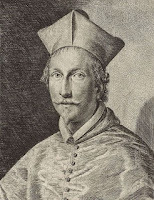Paolo Rossi - World Cup hero
Goalscorer who bounced back from two-year ban
The footballer Paolo Rossi, whose goals steered Italy to World Cup glory in 1982, was born on this day in 1956 in Prato in Tuscany. At the peak of his career in club football, in which his best years were with Juventus and Vicenza, Rossi scored almost 100 Serie A and Serie B goals in seven seasons. Yet for many, his exploits with the Italian national team define his career. In 48 appearances he scored 20 goals, including six in the 1982 finals in Spain, when he won the Golden Boot as the tournament’s top scorer and the Golden Ball as the best player. In 1982 he also won the Ballon D’Or, the prestigious award given to the player of the season across all the European leagues, following in the footsteps of Omar Sivori and Gianni Rivera to become the third Italian player to win the vote, in which company he has since been joined by Roberto Baggio and Fabio Cannavaro. His success story is all the more remarkable for the fact that he scaled so many personal peaks after being banned from football for two years in a match-fixing scandal, although he denied the accusations levelled at him. Read more…
_________________________________________________________________
Augustus - the first Emperor of Rome
Great nephew of Julius Caesar became powerful leader
Augustus, who history recognises as the first Emperor of Rome, was born Gaius Octavius on this day in 63 BC in Rome. He was to lead Rome’s transformation from republic to empire during the stormy years following the assassination of his great-uncle and adoptive father Julius Caesar, the dictator of the Roman Republic. The son of a senator and governor in the Roman Republic, Octavius was related to Caesar through his mother, Atai, who was Caesar’s niece. The young Octavius was raised in part by his grandmother Julia Caesaris - Caesar’s sister - in what is now Velletri, about 40km (25 miles) southeast of Rome. Octavius was only 17 when he learned of his great uncle’s death, although he had begun to wear the toga - a symbol of manhood - at 16 and fought alongside Caesar in Hispania (Spain), where his bravery prompted Caesar to name him in his will as his heir and successor. When Caesar died, his allies rallied around Octavius - now known as Octavian - against Mark Antony, his rival for power, and troops loyal to Octavian defeated Antony’s army in northern Italy. However, the future emperor stepped back from seeking to eliminate Mark Antony, preferring that they formed an alliance. Read more…
________________________________________________________________
Mussolini's last stand
Deposed dictator proclaims Republic of Salò
In what would prove the final chapter of his political career - and his life - Benito Mussolini proclaimed the creation of the Italian Social Republic on this day in 1943. The establishment of this new state with the Fascist dictator as its leader was announced just 11 days after German special forces freed Mussolini from house arrest in the Apennine mountains. Although Mussolini was said to be in failing health and had hoped to slip quietly into the shadows after his escape, Hitler's compassion for his Italian ally - whose rescue had been on the direct orders of the Fuhrer - did not extend to giving him an easy route into retirement. Faced with an Allied advance along the Italian peninsula that was gathering momentum, he put Mussolini in charge of the area of northern and central Italy that was under German army control following the Grand Fascist Council's overthrow of the dictator. Although the area was renamed the Italian Social Republic - also known as the Republic of Salò after the town on the shores of Lake Garda where Mussolini's new government was headquartered - it was essentially a puppet German state. Read more…
__________________________________________________________________
Francesco Barberini – Cardinal
Patron of the arts sympathised with Galileo
Francesco Barberini, a cardinal who as Grand Inquisitor of the Roman Inquisition refused to condemn the scientist Galileo Galilei as a heretic, was born on this day in 1597 in Florence. As a cardinal working within the Vatican administration, Barberini also became an important patron of literature and the arts. The son of Carlo Barberini and Costanza Magalotti, Francesco was assisted by Galileo during his studies at the University of Pisa. The scientist was also a family friend. Francesco graduated in canon and civil law at the age of 25 in 1623. Later that year, his uncle, Maffeo Barberini, who had been recently elected as Pope Urban VIII, made him a cardinal and sent him to be papal legate to Avignon. He was sent to Paris as a special legate to negotiate with Cardinal Richelieu and then to Spain as a papal legate, but both his missions were unsuccessful. From 1633 until his death more than 40 years later, Barberini was the Grand Inquisitor of the Roman Inquisition. He was part of the Inquisition tribunal investigating Galileo after the publication of writings supporting the arguments put forward by the German scientist Nicolaus Copernicus that the sun and not the earth was the centre of the universe. Read more…
Home














